Facebook
Twitter
WhatsApp
Marlon de Azambuja is a Brazilian artist whose work focuses on urbanism, architecture, and the interplay between public and private spaces. He is recognized for his large-scale sculptures and installations that incorporate a diverse range of materials and techniques. To create his Cooling Towers series (2016), de Azambuja used black marker to obscure portions of historical black-and-white photographs by Bernd and Hilla Becher depicting buildings slated for demolition. The works evoke a sense of loss and connection to other absences, such as those erased by political regimes and developers.
De Azambuja’s Brutalismo series, begun in 2013, explores Brutalist architecture’s raw concrete surfaces, bold geometric forms, and imposing monumentality. Found materials and a range of techniques result in sculptures that both evoke and subvert the Brutalist aesthetic. The series plays with scale and proportion, creating a sense of disorientation and unease as viewers confront the sculptures’ imposing presence and intricate details. De Azambuja’s use of raw materials exposed and displayed as a “completed” work illuminates the life-size elements that comprise inhuman structures. He explains that this is not an attempt to capture the city’s face, but rather a search for its bones.
The Posse series (2022) features porcelain parrots in a decorative nineteenth-century style placed alongside concrete-colored sculptures, highlighting the conflict between modern oppressors and the natural environment. Museum/Birdcages (2009–ongoing) features real birds inside birdcages designed in the shape of famous art museums, speaking to exploitative collection practices. Many of de Azambuja’s large paintings depict eerie, tactile tropical flora. To create these works, he sprays a canvas black and places real palm leaves on the surface, then paints them green. The resultant sense of both decoration and menace highlights the commodification of tropical motifs.
Overall, de Azambuja’s work emphasizes the social and political dimensions of the built environment and engages deeply with the materials, forms, and textures of urban landscapes. His sculptures, installations, and paintings challenge viewers to reconsider their relationship with the spaces they inhabit and to think critically about the social and political forces that shape our constructed world.

Marlon de Azambuja
Nocturna
2020
Spray paint dust and natural leaves on wood
2.2 × 8 m
(exhibition view, Brutalismo, Revolver gallery, Buenos Aires)
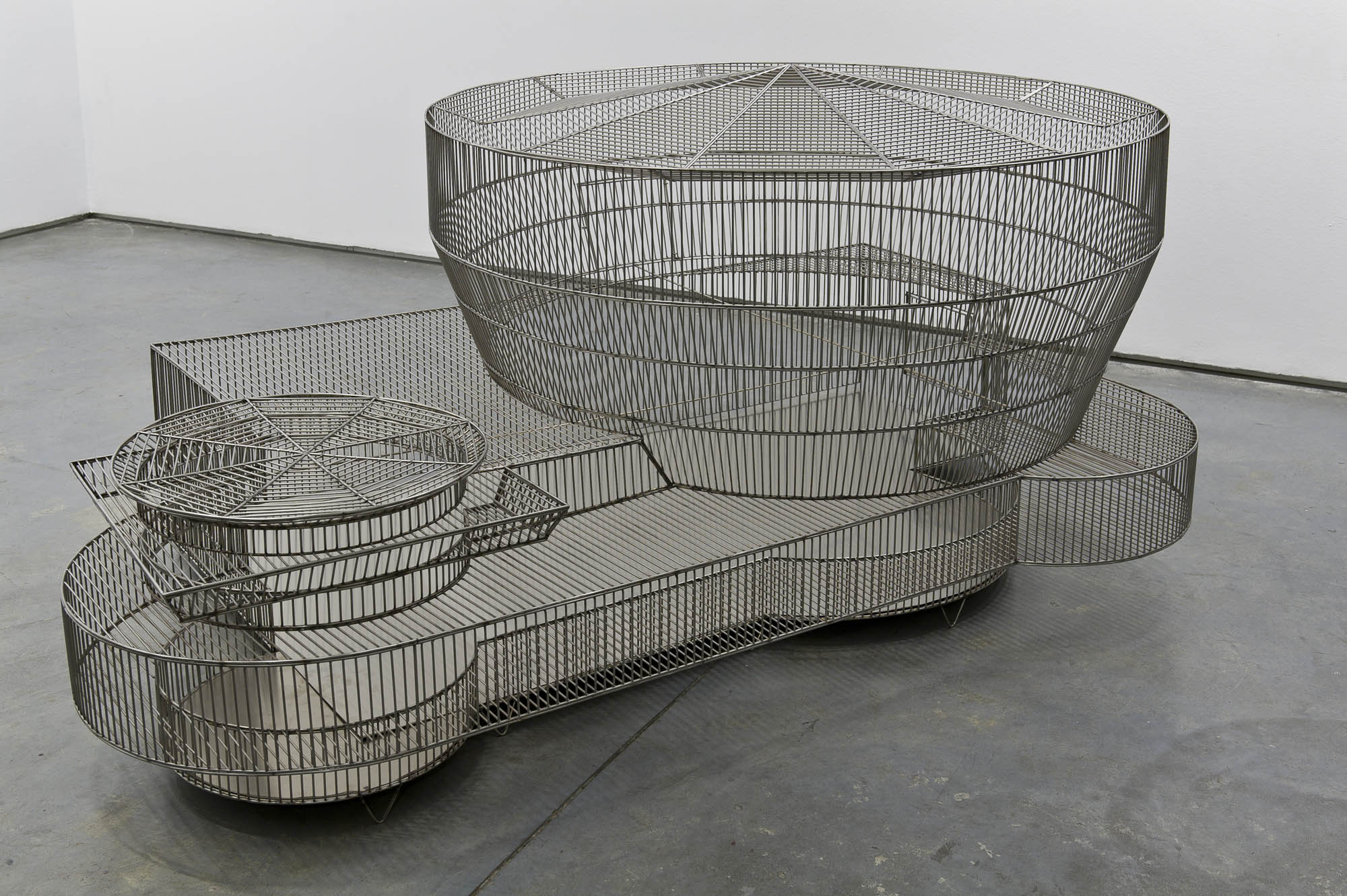
Marlon de Azambuja
Cage - Guggenheim
2011
Stainless steel, birds
80 × 200 × 120 cm
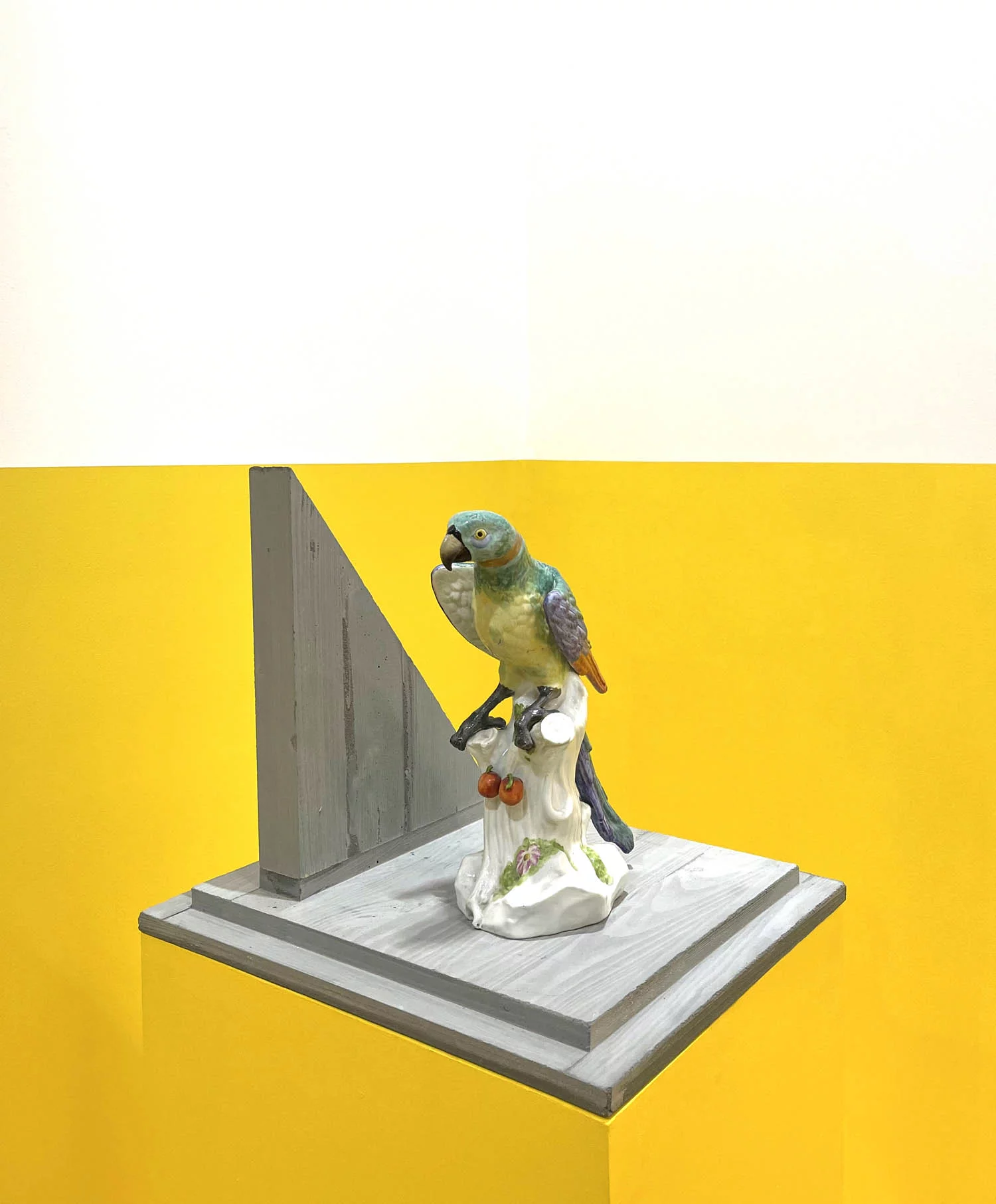
Marlon de Azambuja
Posse
2022
Concrete formwork and European porcelain
33 × 50 × 40 cm
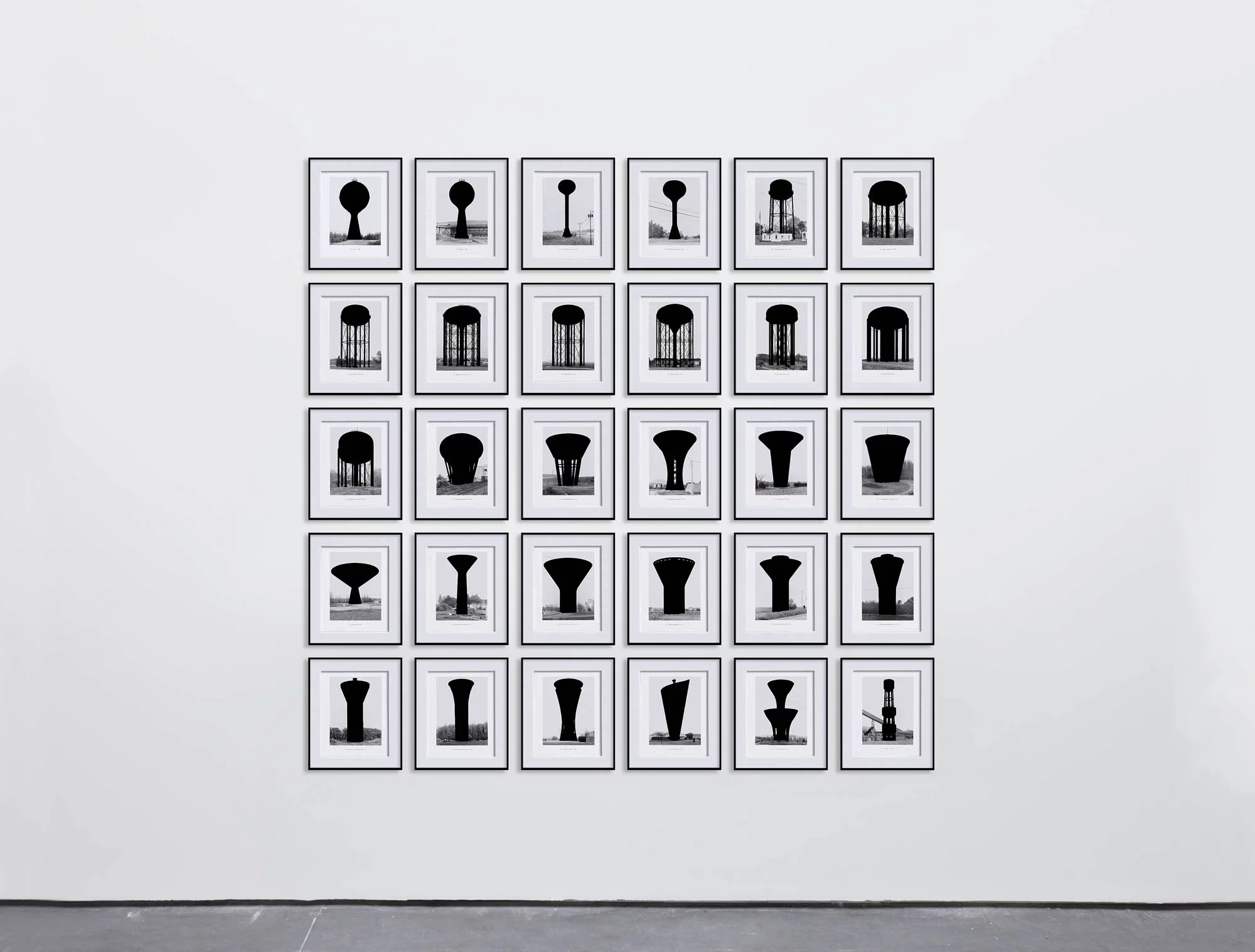
Marlon de Azambuja
Catalogue Raisonné - Water Towers
2014
Black marker on monographic publication by Bernd and Hilla Becher
38 × 32 cm each
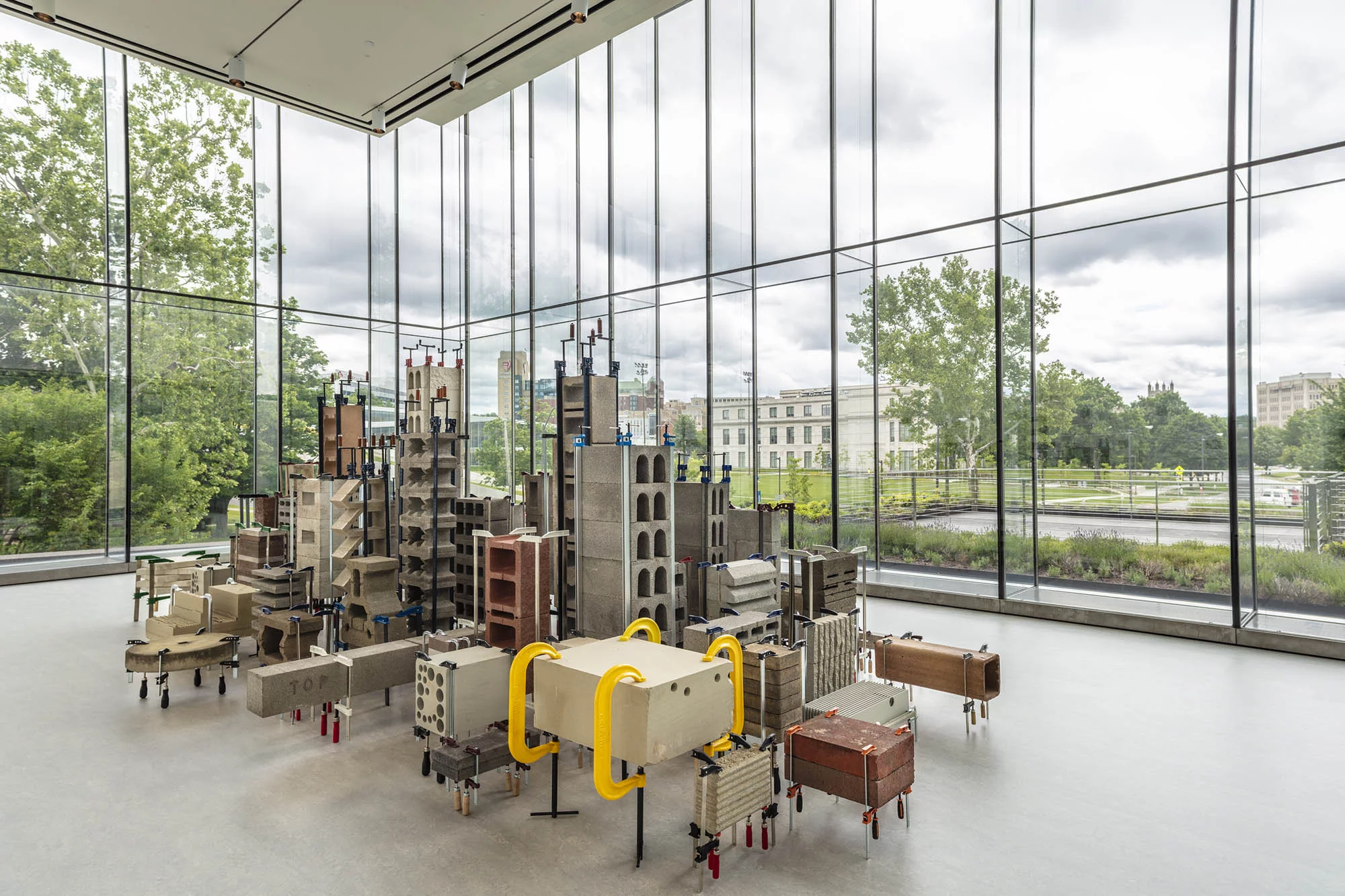
Marlon de Azambuja
Brutalismo
2018
Local building materials and industrial clamps
Dimensions variable
(exhibition view, Front - Cleveland Triennial, Cleveland Museum of Art)
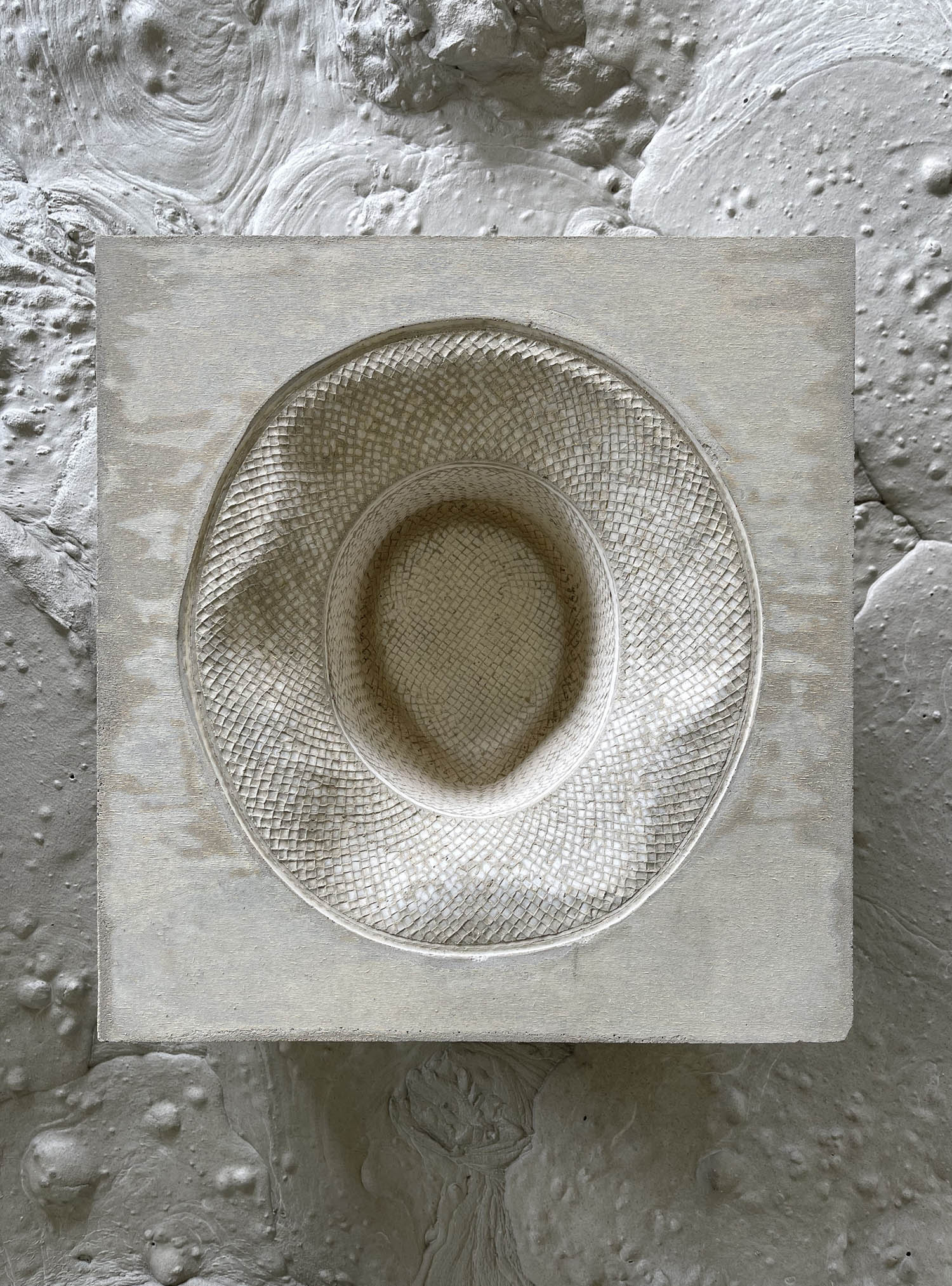
Marlon de Azambuja
Cruzeiro do Sul
2022
Concrete formwork and hat
28 × 48 × 46 cm
Marlon de Azambuja is a Brazilian artist whose work focuses on urbanism, architecture, and the interplay between public and private spaces. He is recognized for his large-scale sculptures and installations that incorporate a diverse range of materials and techniques. To create his Cooling Towers series (2016), de Azambuja used black marker to obscure portions of historical black-and-white photographs by Bernd and Hilla Becher depicting buildings slated for demolition. The works evoke a sense of loss and connection to other absences, such as those erased by political regimes and developers.
De Azambuja’s Brutalismo series, begun in 2013, explores Brutalist architecture’s raw concrete surfaces, bold geometric forms, and imposing monumentality. Found materials and a range of techniques result in sculptures that both evoke and subvert the Brutalist aesthetic. The series plays with scale and proportion, creating a sense of disorientation and unease as viewers confront the sculptures’ imposing presence and intricate details. De Azambuja’s use of raw materials exposed and displayed as a “completed” work illuminates the life-size elements that comprise inhuman structures. He explains that this is not an attempt to capture the city’s face, but rather a search for its bones.
The Posse series (2022) features porcelain parrots in a decorative nineteenth-century style placed alongside concrete-colored sculptures, highlighting the conflict between modern oppressors and the natural environment. Museum/Birdcages (2009–ongoing) features real birds inside birdcages designed in the shape of famous art museums, speaking to exploitative collection practices. Many of de Azambuja’s large paintings depict eerie, tactile tropical flora. To create these works, he sprays a canvas black and places real palm leaves on the surface, then paints them green. The resultant sense of both decoration and menace highlights the commodification of tropical motifs.
Overall, de Azambuja’s work emphasizes the social and political dimensions of the built environment and engages deeply with the materials, forms, and textures of urban landscapes. His sculptures, installations, and paintings challenge viewers to reconsider their relationship with the spaces they inhabit and to think critically about the social and political forces that shape our constructed world.

Marlon de Azambuja
Nocturna
2020
Spray paint dust and natural leaves on wood
2.2 × 8 m
(exhibition view, Brutalismo, Revolver gallery, Buenos Aires)

Marlon de Azambuja
Cage - Guggenheim
2011
Stainless steel, birds
80 × 200 × 120 cm

Marlon de Azambuja
Posse
2022
Concrete formwork and European porcelain
33 × 50 × 40 cm

Marlon de Azambuja
Catalogue Raisonné - Water Towers
2014
Black marker on monographic publication by Bernd and Hilla Becher
38 × 32 cm each

Marlon de Azambuja
Brutalismo
2018
Local building materials and industrial clamps
Dimensions variable
(exhibition view, Front - Cleveland Triennial, Cleveland Museum of Art)

Marlon de Azambuja
Cruzeiro do Sul
2022
Concrete formwork and hat
28 × 48 × 46 cm